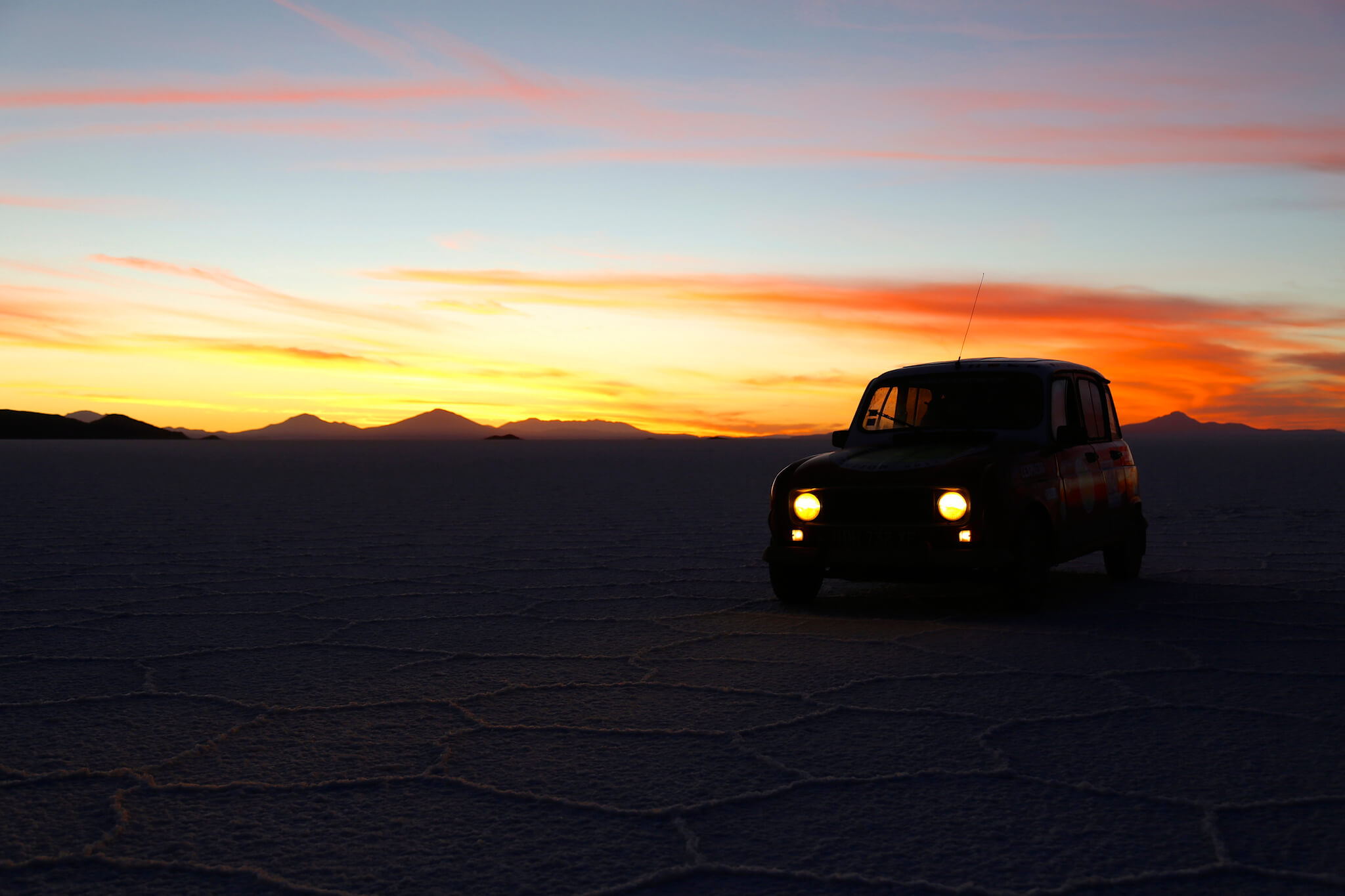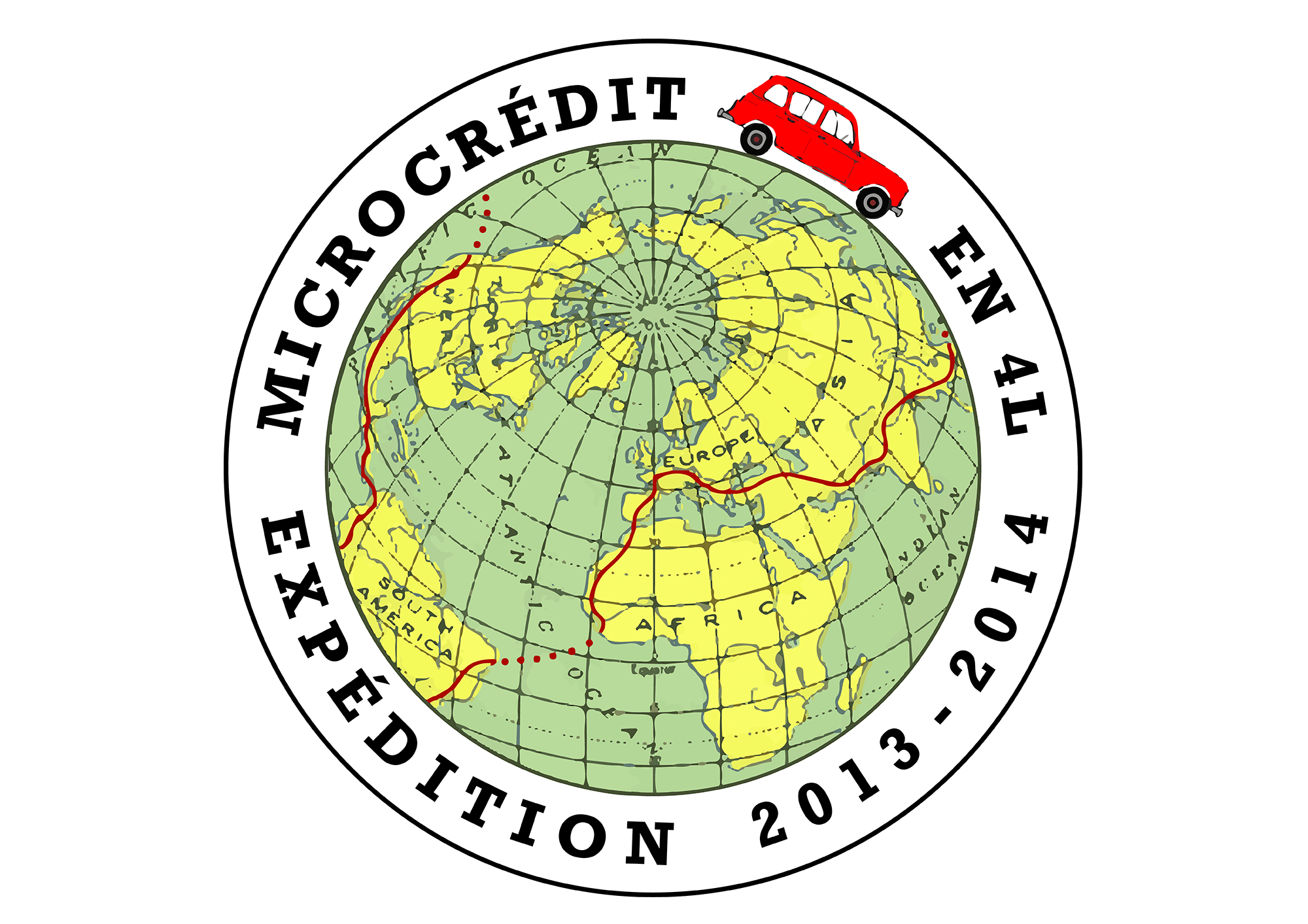BOLIVIA
Salar de Uyuni and ascent of the Huayna Potosí (6,088 m)
In September 2013, I set off with my childhood friend Nicolas Auber on a round-the-world trip in a 4L to support entrepreneurship through microcredit. Here’s my diary of our time in Bolivia.
Fire extinguisher, first-aid kit, cross, warning triangle, spare wheel, jack, basic tools… Nothing to do, the Bolivian police can’t find anything to reproach us for. Our passports freshly stamped, we are about to cross the border separating Peru and Bolivia when… STOP!
“Gentlemen, I’m sorry but I can’t let you pass, nor can I go even one meter in Bolivia! Your insurance is not valid.”
We know this for a fact, as the border guard is holding in his hands an insurance policy we took out over a month ago in Ecuador, valid only in that country. We pretend to be surprised and explain in deliberately bad Spanish that we’ll buy a new one in the next town. In reality, it’s a classic scam between two countries, with police officers hoping to make ends meet. If there isn’t an insurance office right on the border, then it’s possible to cross without national insurance. After a few minutes of absurd discussions, the discouraged policemen opened the gate leading to Bolivia. We would later learn that it’s not even compulsory in this country.
Our first steps in Bolivia’s Copacabana were guided by the sound of loud music, and it was at decibels that we found ourselves in a hangar where a huge party was taking place. Amazed, we couldn’t believe our eyes to see all these Bolivians aged between thirty and seventy having such a good time in their traditional dresses, suits and hats. When a man handed us his case of 12 x 66cl beers, we realized that we’d landed in an extraordinary drinking party. Women and men alike were smoking, drinking and dancing to the frenetic beat of a Bolivian band. In the space of a few hours, we were invited to share dozens of beers with hilarious Bolivian men and women, proposals we accepted with great pleasure on the first few rounds and a little reluctantly after the fifteenth glass! While everyone at the party was clearly drunk, some were more so than others. Alcohol abuse provoked the most excessive situations, and it was with amazement that we saw women fighting, a man vomiting on his wife’s shoulder, others snoring slumped on chairs with a 500-watt loudspeaker for a pillow, not to mention men and women urinating in public! The generosity and joie de vivre of these people, and the unreal atmosphere of the evening, took us completely by surprise.
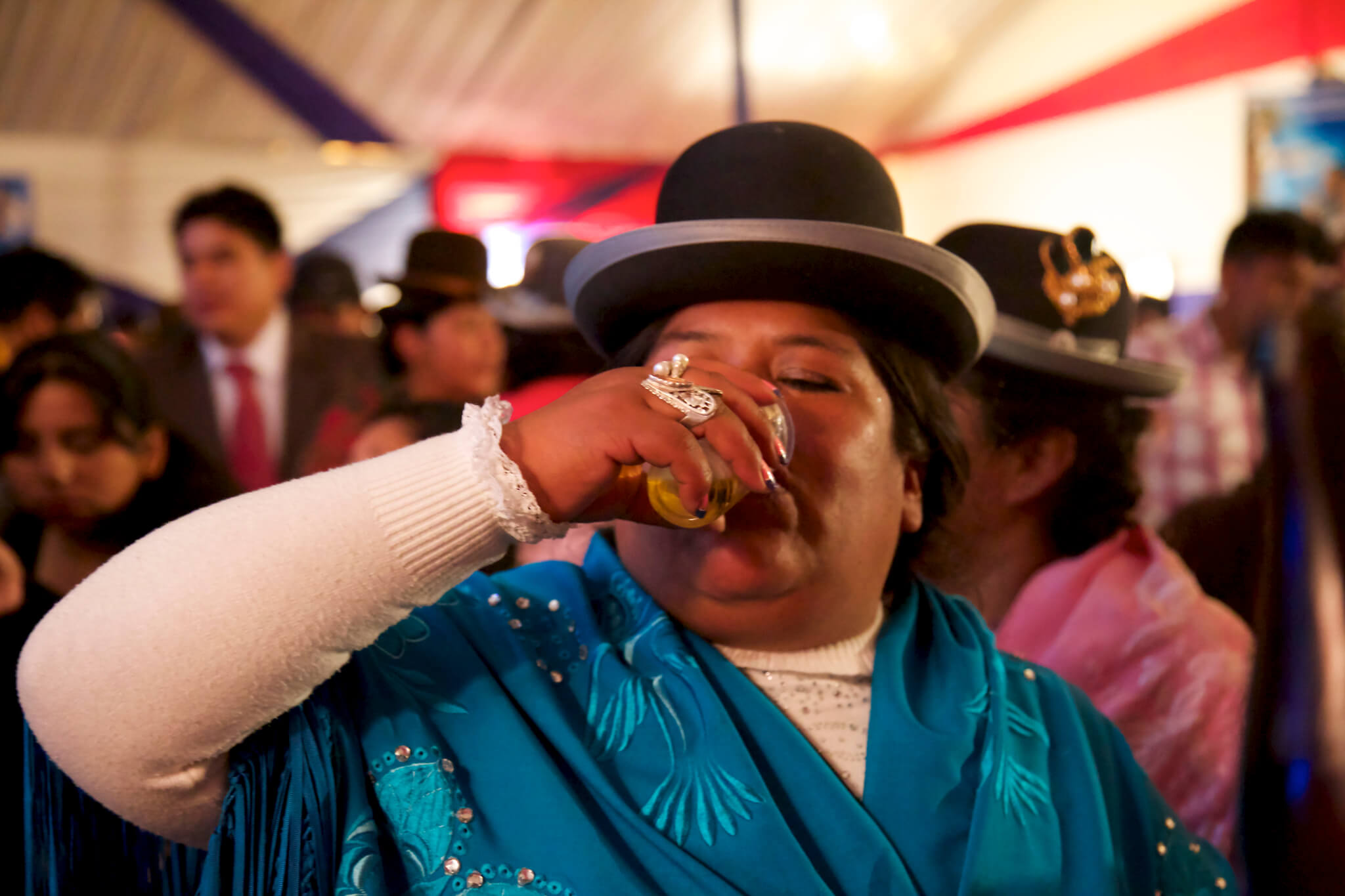
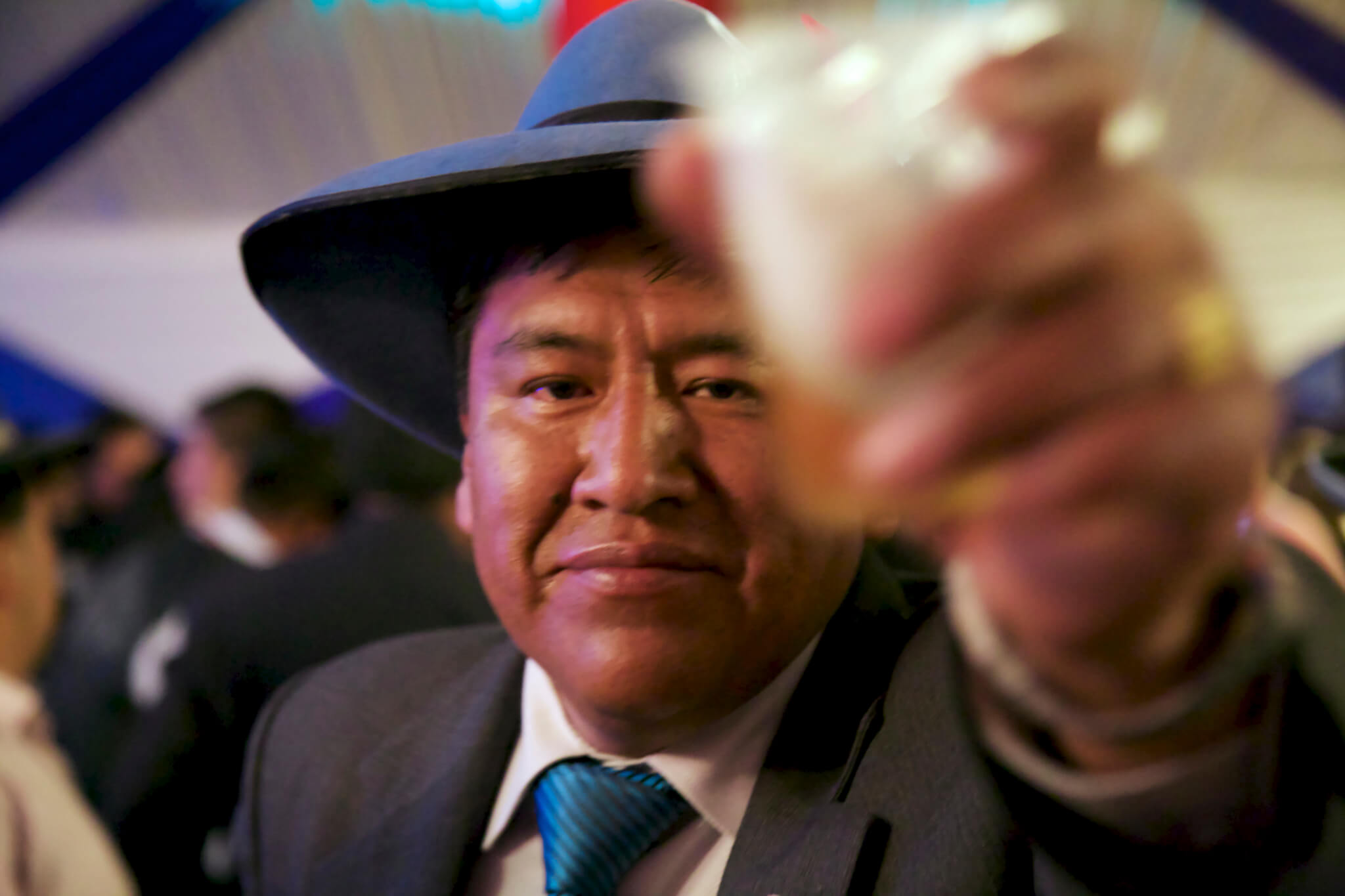
So it was with a slight headache that, after a few hours by boat, we discovered Isla del Sol on Lake Titicaca, the cradle of Inca civilization. The hike across the island offers a unique view of the lake, but the island itself was a little touristy for our taste, and we were soon back in La Paz. Our daily trips to the petrol pump turned out to be a bit special in Bolivia. In fact, petrol is subsidized by the government, so foreigners, whether from neighbouring countries or Europe, have to pay three times the price displayed at the station, i.e. €0.90 per liter! One technique we abused was to subtly make the attendant understand that we didn’t need a bill, and as if by magic the price dropped to 0.50€! You can imagine the difference… La Paz, the economic heart and government capital of Bolivia, is an astonishing city. From its bustling center, we could see the thousands of small orange-brick houses clinging to the sides of the immense canyon that encloses the city, against a backdrop of snow-capped mountains. However, traffic and congestion make for an unbreathable atmosphere, and it was without hesitation that we found refuge outside the city in a camp populated by overlanders doing the Panamericana, or more! On arrival we were greeted by a German couple in a Canadian 4×4, a French family in a Chilean camper van and a Franco-Dutch couple in a converted truck! We couldn’t help but think back to our stopover in Panama City, and it was once again great fun to share a few days with these travelers!
The reason we stopped in La Paz – which in the end is of little interest – is its proximity to Huayna Potosí, a peak at 6,088 metres above sea level, whose particularity is that it’s easy to access for novice mountaineers like us! The three-day ascent with a guide began with a day of acclimatization and training in the use of ropes, ice axes and crampons at base camp at 4,800 metres, the same altitude as Mont Blanc! After walking for a few hours over steep paths and scree with all our gear, we found shelter 400 metres higher up. Having lived for many weeks on the altiplano, our bodies had had time to multiply their red blood cells, so we both reacted well to the rigors of altitude – the main difficulty of the climb – and followed our guide with a certain ease. However, undertaking such an ascent requires patience and a little preparation.
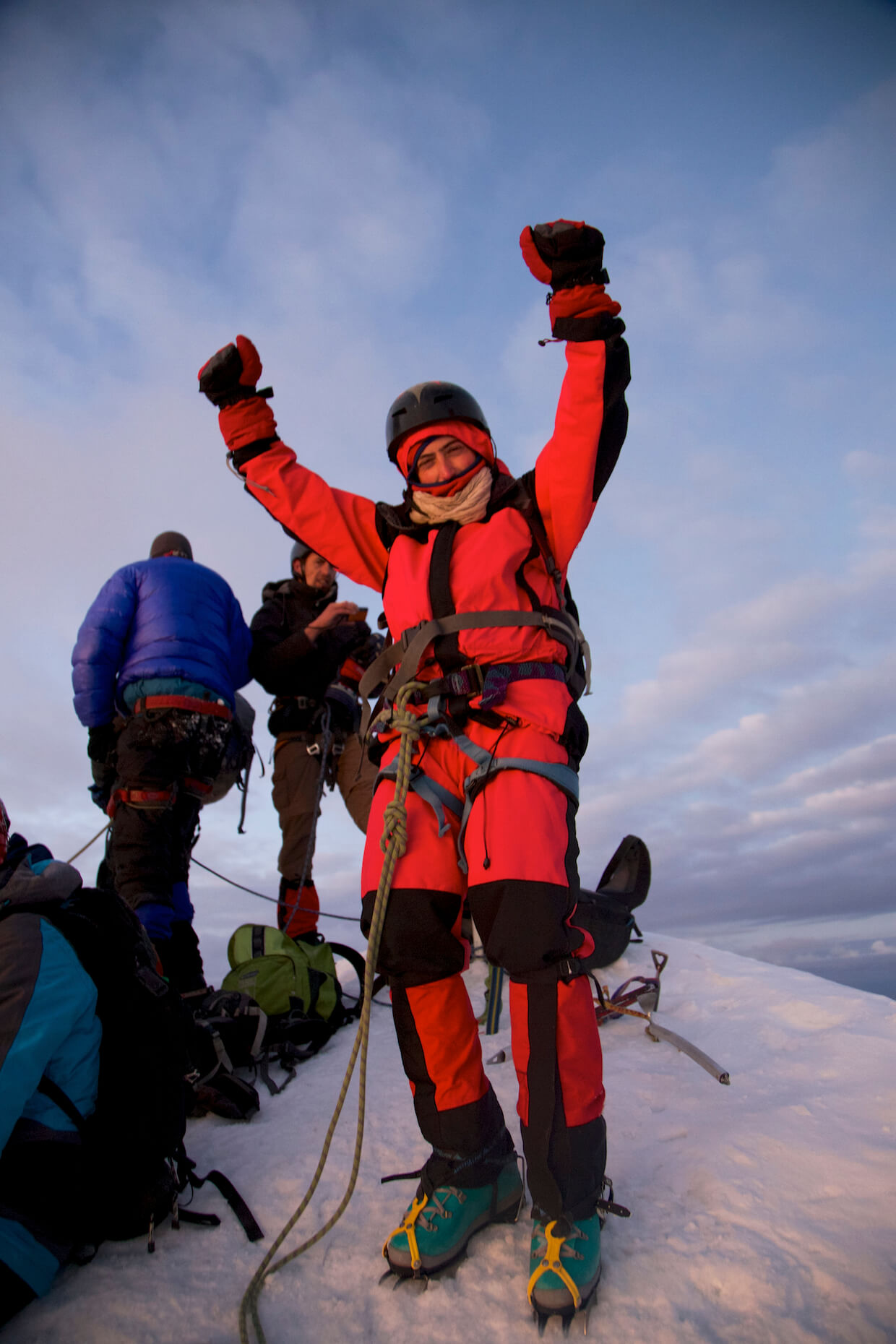
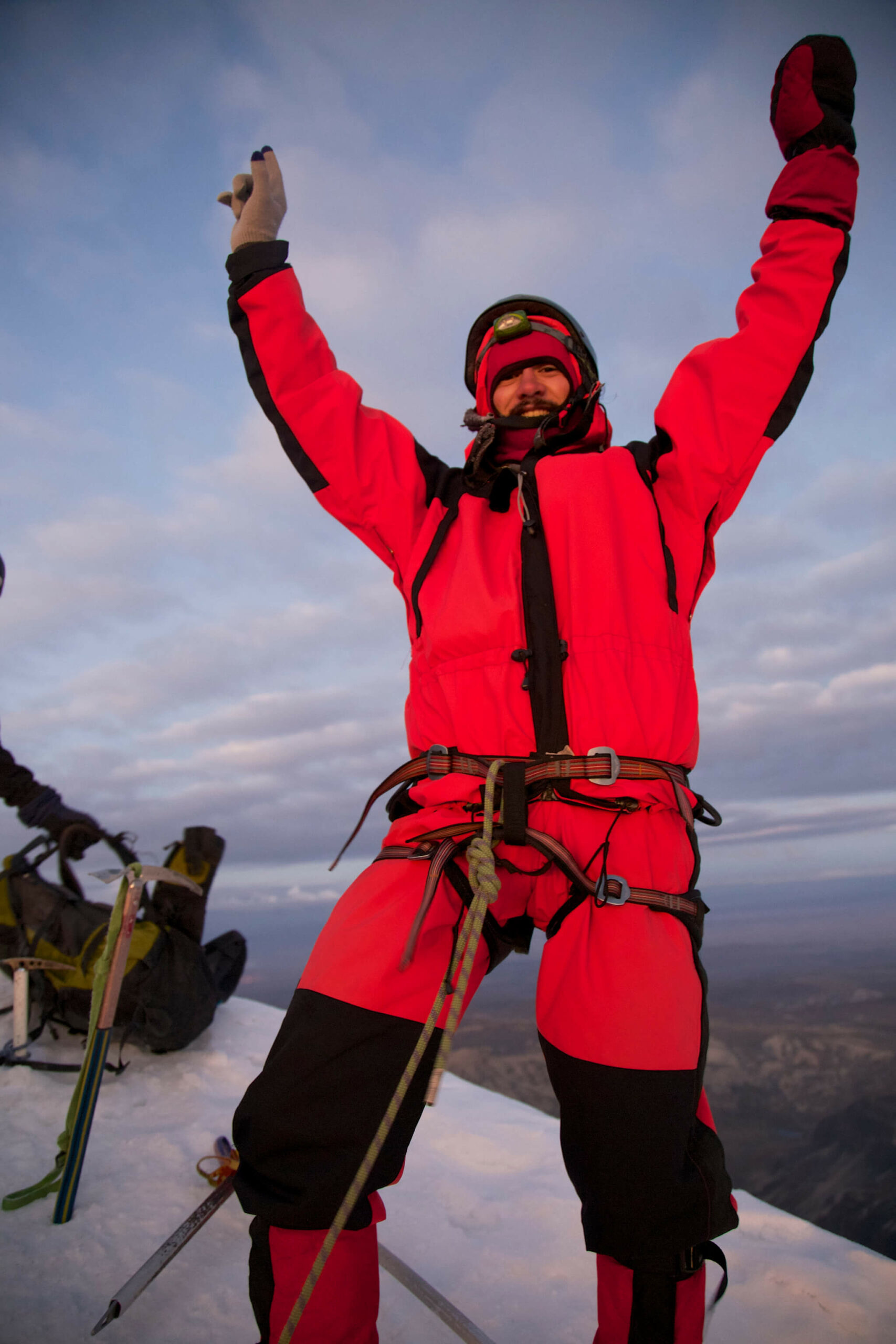
The night before the final ascent, we had an early dinner and went to bed at 6pm to tackle the night walk in the snow at 2am. Helmeted and roped to our guide, we began to climb slowly, looking only at our feet so as not to see the headlamps of the people above us, who seemed miles away. Step by step. Not thinking. Not giving up. Just keep moving, one hand holding an ice axe, the other the rope attached to our harness so as not to cut it with our crampons. Despite our acclimatization, we felt the first signs of altitude sickness: shortness of breath, nausea and headaches that made the effort more difficult to accomplish. After a few hand-and-foot scrambles, we found ourselves on an 80-metre-long ridge leading to the summit. Only about 30 centimetres wide and lined with precipices several hundred metres long, we had to redouble our concentration and advance very slowly, one foot in front of the other. It was finally at 6.30 a.m. that our roped party reached the summit at an altitude of 6,088 metres, and we witnessed a moving sunrise from the top of our mountain. The hundreds of mountain peaks breaking through a sea of clouds, the orange light on the snow and the gigantic shadow of Huayna Potosí were a sight we won’t soon forget. The descent was of course much quicker, but no less demanding. Back at the hut for a little rest, we can still see ourselves over our steaming cups of coffee, thinking back to our nocturnal ascent. As if in a dream, we climbed blindly for several hours, only to discover our surroundings, the scenery and the sumptuous views in awe at sunrise. As a reward for our efforts, we enjoyed a raclette in a Swiss restaurant that evening!
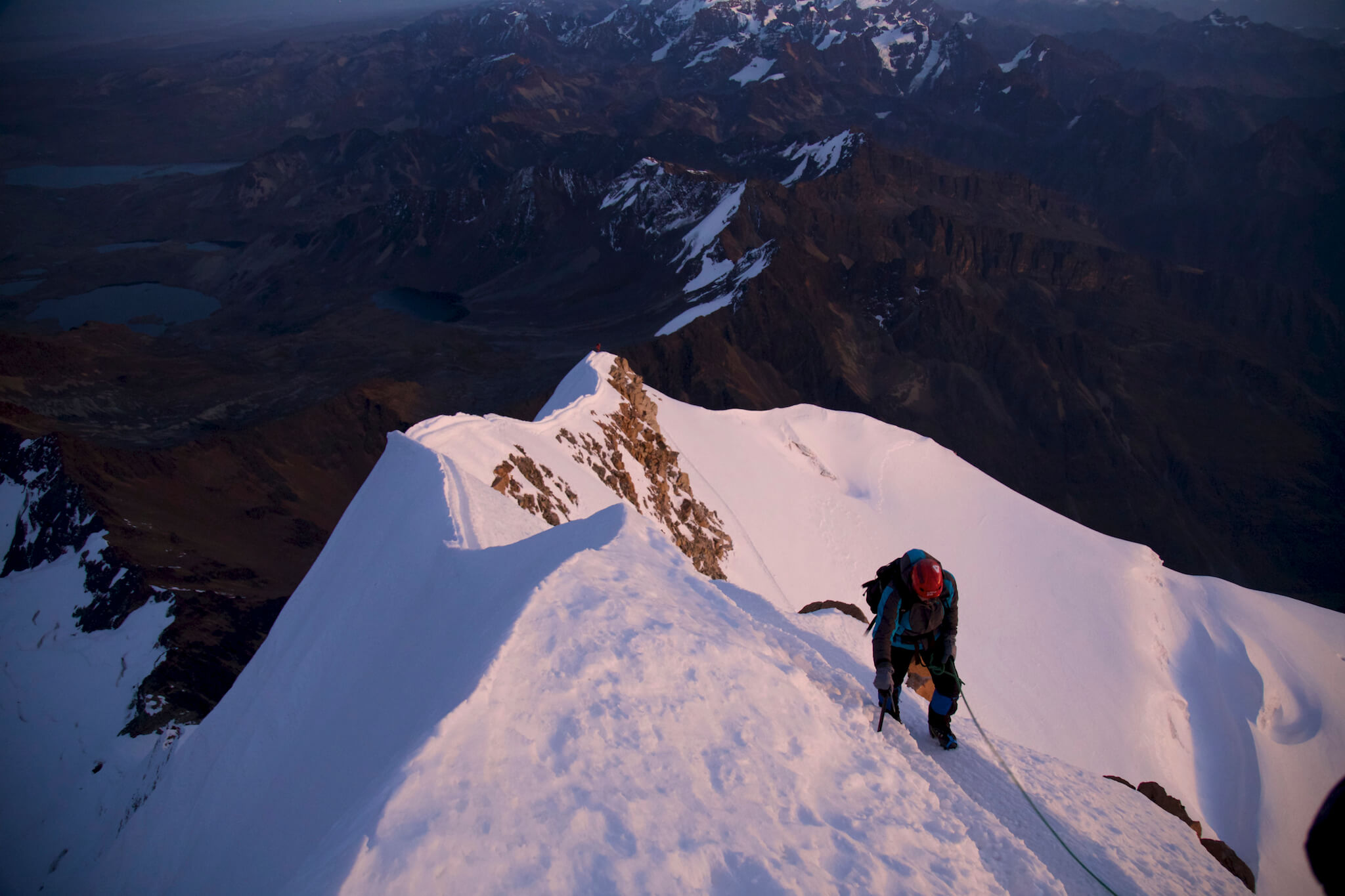
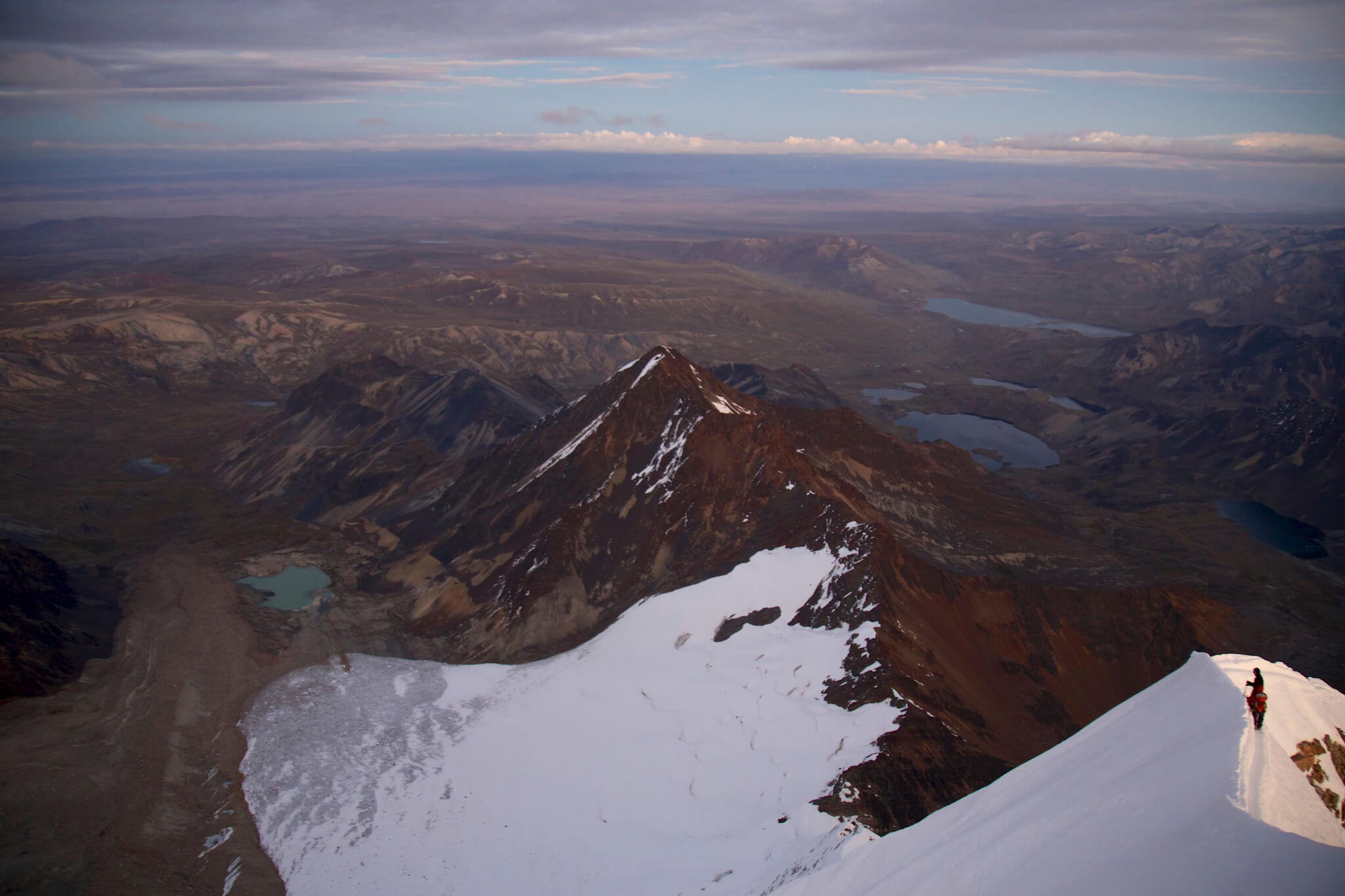
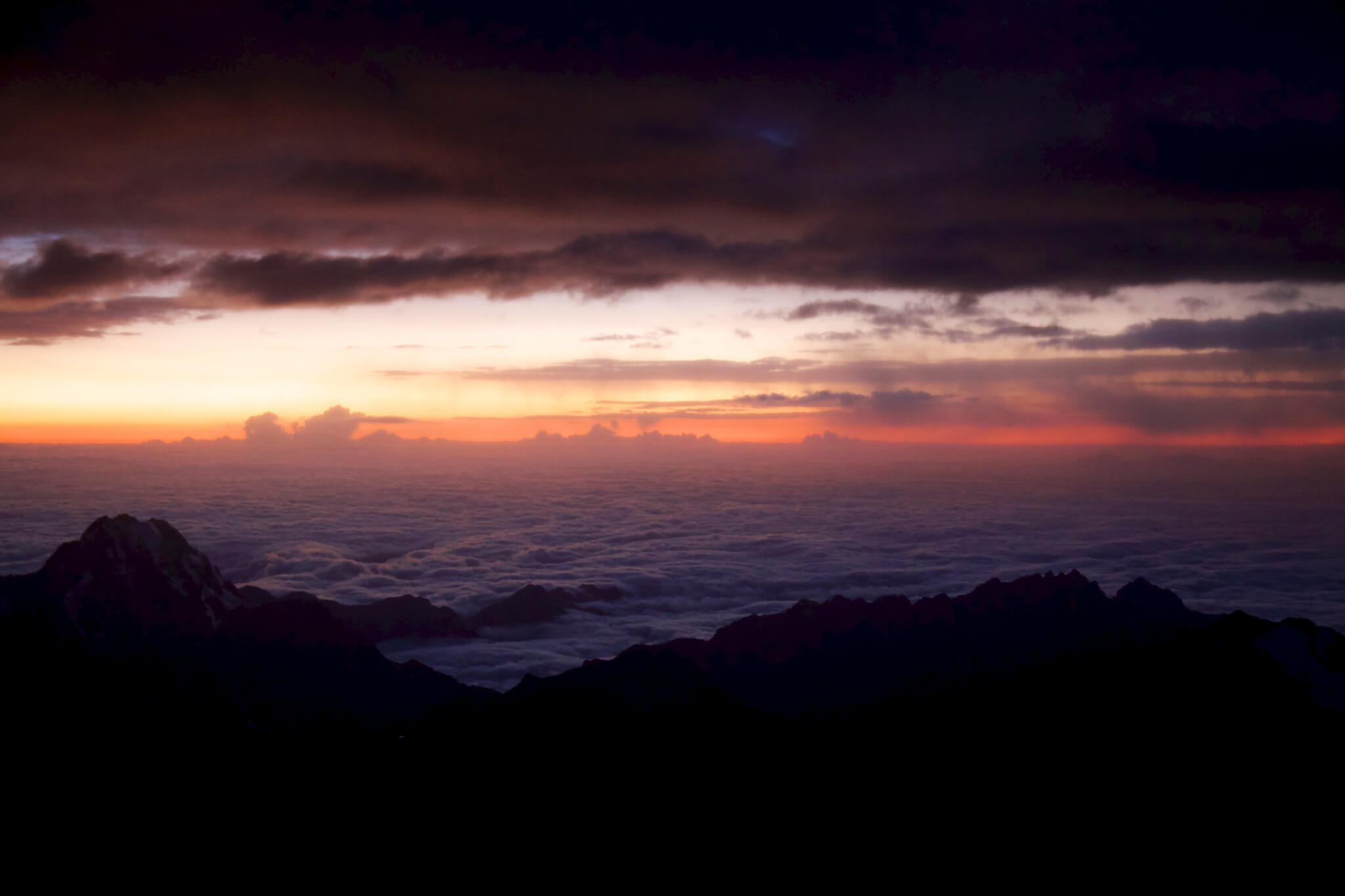
As if we hadn’t had enough thrills, right after our climb we decided to take on – despite the rain and fog – the famous Camino de la Muerte, the Death Road. Known for its extreme danger, a new route has now been laid out and this historic road has become something of a tourist attraction, as witnessed by the many cyclists who speed down it every day. The view from the track is impressive, but although it’s cut by huge fords, it’s not the worst or most dangerous road we’ve ever been on! Our next stop was the town of Potosí, famous for its lucrative silver mines, exploited since 1535. Perched at an altitude of 4,060 metres, it is the highest city in the world! Every visit to the mines begins with a stop at the market to buy “gifts for the miners”: drinks, coca leaves, dynamite, cigarettes and 96% alcohol, which they cut with coca-cola or juice. This systematic practice of offering gifts to the miners in their workplace is ultimately sympathetic, as the latter are grateful and open to dialogue, so the inquisitive tourist doesn’t feel so intrusive. Visiting these mines was an incredible experience. The galleries are supported by wooden beams, some of which are broken. The rails used to push the mineral-filled waggons are often covered in thick mud, and the smell of sulfur, silica and the prevailing heat make for a stifling atmosphere. We were almost constantly bent over as we made our way through the arteries of the mine, sometimes even advancing with our heads at waist level or our hands on the ground. Although extremely arduous and dangerous, the miners seem very proud of their work, which is relatively well paid. Indeed, the average wage in Bolivia is 120€ a month, and a miner earns between 10 and 15€ a day. For two hours, we were literally immersed in the world of Étienne Lantier, hero of Émile Zola’s novel Germinal. Weakened by our passage through the bowels of the earth, it was with relief that we returned to daylight and fresh air!
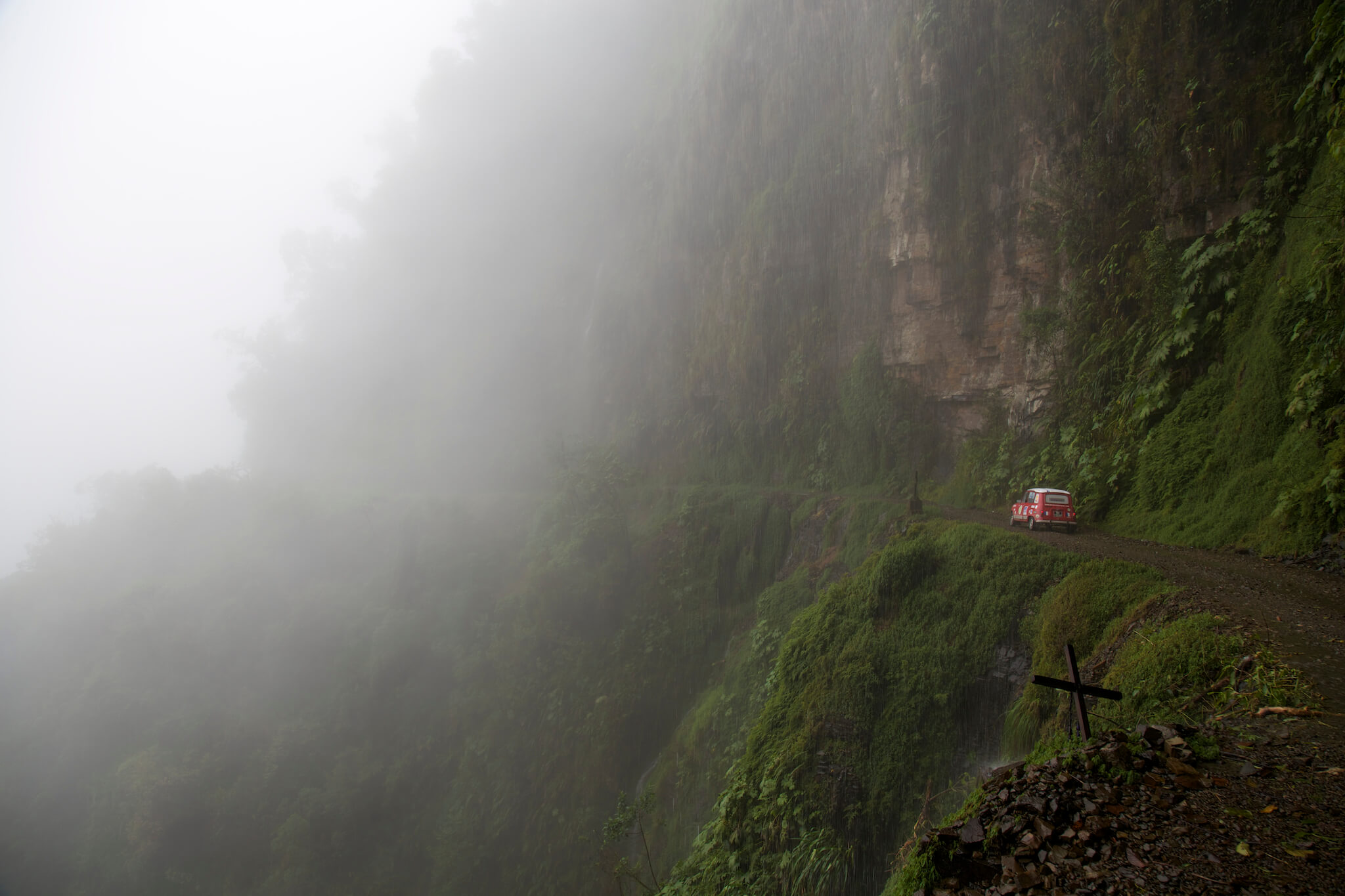
A short stopover in the beautiful colonial town of Sucre, Bolivia’s legal capital, was the perfect opportunity to prepare our little expedition to the Salar de Uyuni, the world’s largest salt desert! We had planned to spend three days roaming the area, so we needed to be self-sufficient in water, fuel and food. So we meticulously made our purchases at the market, and it was with a trunk full of peanuts, olives, beer, tuna, avocados, tomatoes, corn, apples, freeze-dried noodles, cakes, eggs, bread and coffee that we entered the desert of our dreams! Surrounded by a seemingly infinite expanse of salt, only the mountains in the distance interrupted the perfect horizon between heaven and earth. Salt crystals take on the shape of cells as the water from the rainy season evaporates, and this “dense cluster of cells” was curiously reminiscent of the thousands of stars that twinkled above our tent at nightfall.
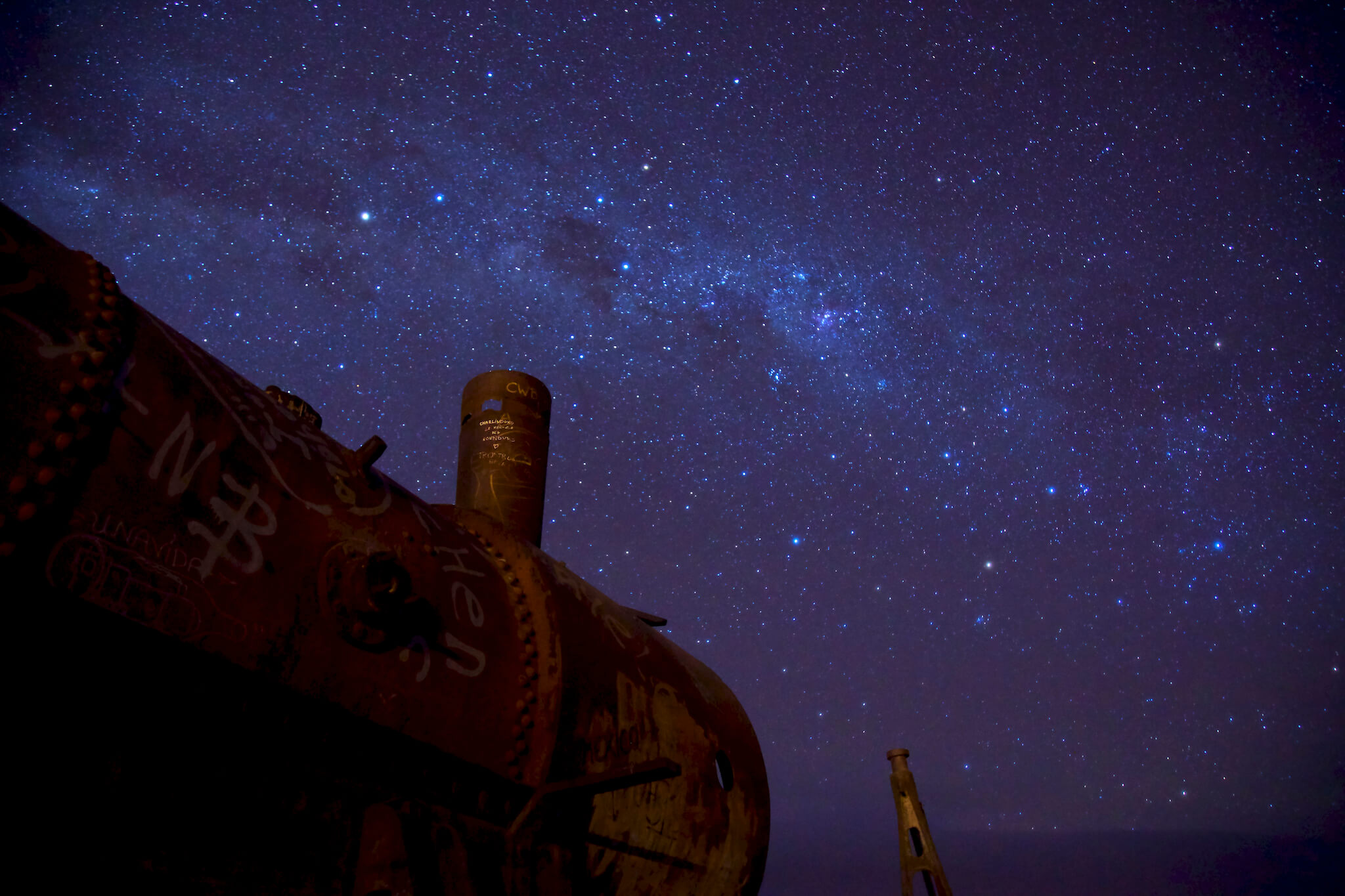
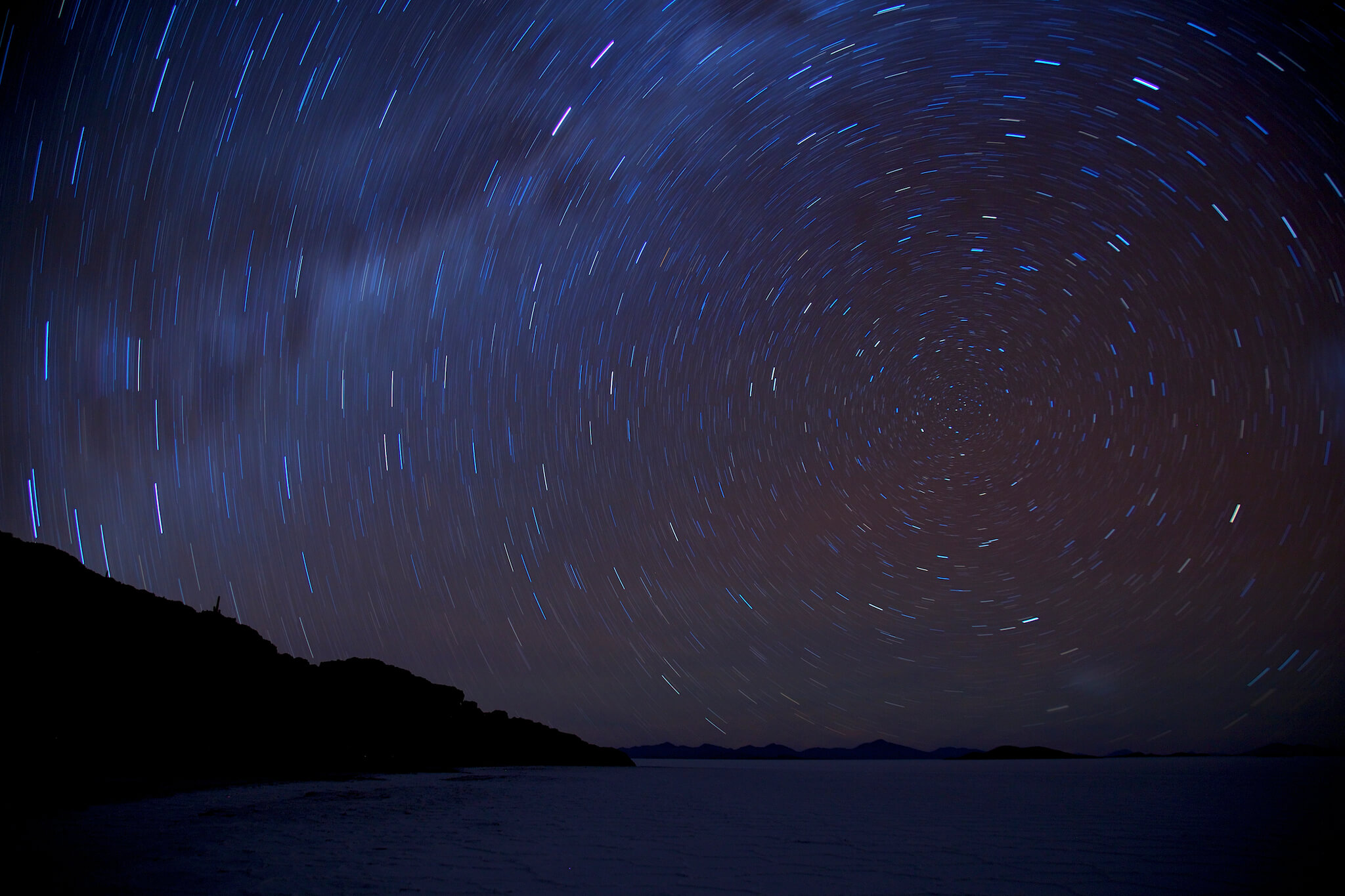
Our bivouacs in this pristine wilderness were particularly cool, with one night’s thermometer reading -15°C! So we slept fully clothed in our sleeping bags (whose comfort limit on the label is +11°C), wrapped in two thick blankets each and huddled under a large tarpaulin we shared. Getting around the Salar de Uyuni is more a question of navigating the sea than driving on the road. Indeed, we weren’t following a road, but a course. Armed with a compass, we could travel at over 100 km/h in this flat, white desert. On the other hand, distance and perspective are very difficult to grasp in such an environment. A mountain may look close to the naked eye, but it could actually be more than 60 kilometers away! Its singular beauty, whiteness and deafening silence left a deep impression on us, and it was truly one of the most beautiful places on our trip.
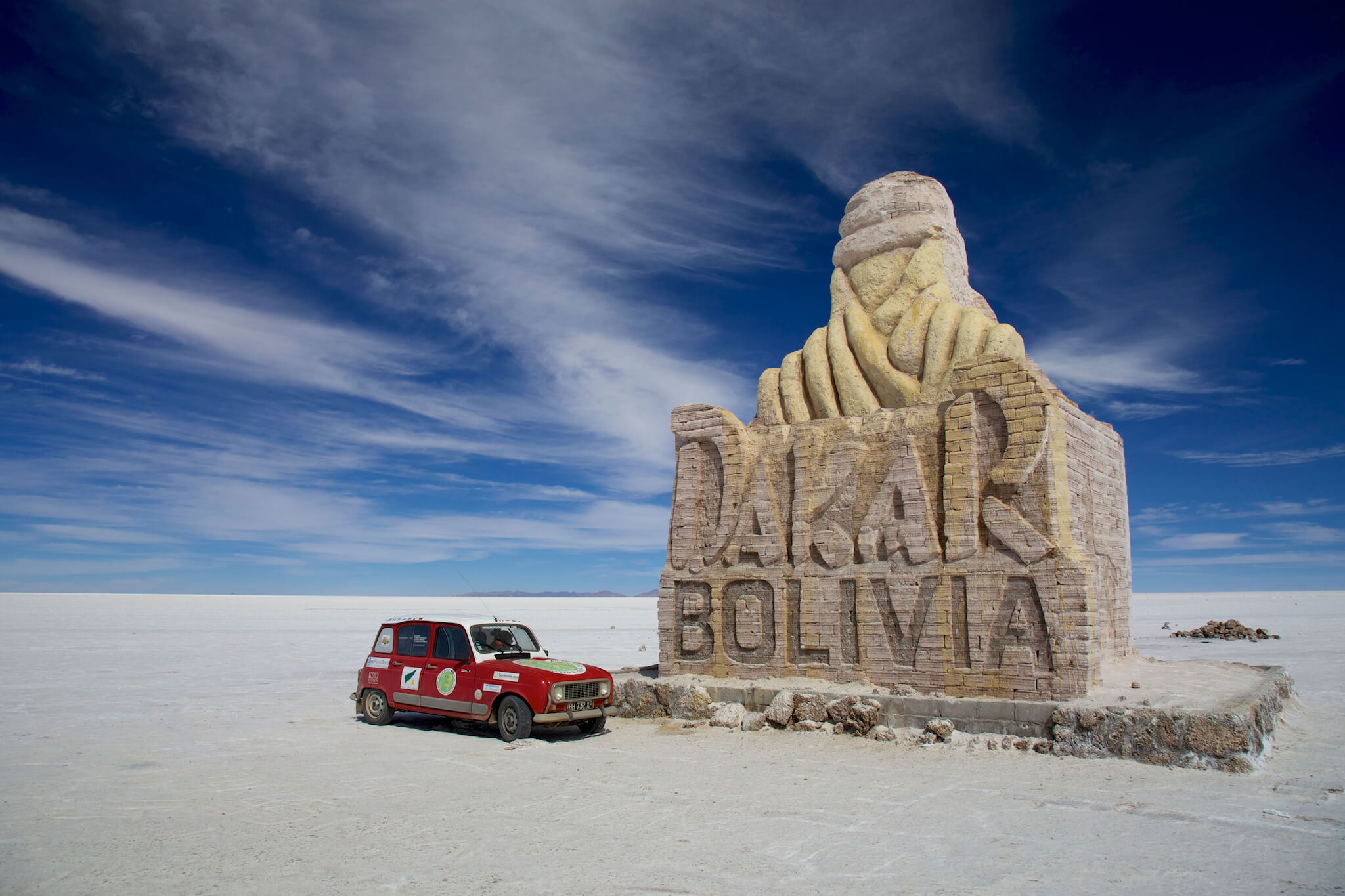
In just under three weeks, we crossed Bolivia. A small, landlocked country in the center of the South American continent, we believe it stands out for the tremendous kindness of its people. Bolivians are adorable, funny and benevolent. However, it was the most demanding country for the 4L. We’ve lost count of the number of passes at altitudes of over 4,000 meters that we’ve had to cross, sometimes at 20 km/h, the almost vertical hills in the cities that we couldn’t climb without being towed, and the broken tracks that put a further strain on our suspensions… Driving in this country has been difficult, and more than once we’ve had to be towed out of a ditch or sand after going off the road. From the town of Tupiza, not far from the border, we’re looking forward to asphalt roads across the great Argentine plains!
